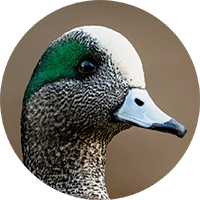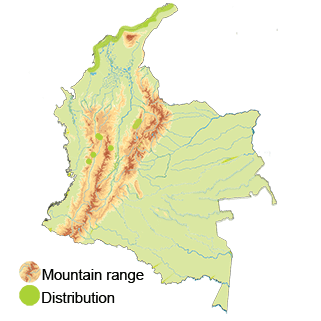American Wigeon
Appearance: American Wigeons are medium-sized ducks( 51 cm - 20 inches), with males (drakes) and females (hens) exhibiting distinct plumage characteristics. The drakes have a white forehead, green streaks on the sides of the head, a greyish-blue bill, and a distinct white patch on the wing called a shoulder bar. They also display a striking combination of chestnut and white coloring on their bodies. Hens, on the other hand, have a mottled brown appearance with a creamy strip above the eye. Grey brown head, fine black line at base of short grey bill; pale tawny sides.
Habitat: American Wigeons occupy a wide range of habitats, including shallow ponds, marshes, lakes, wetlands, and flooded fields during the breeding season. During migration, they can be found in a variety of habitats, including coastal areas, estuaries, and even temporarily flooded fields. In Colombia, they occur mainly in the northern and northeastern regions during the non-breeding season.
Behavior: American Wigeons are herbivorous, feeding on aquatic vegetation and submerged plants. They are dabbling ducks, often found foraging in shallow water by upending and grazing on plant material. They also supplement their diet with grasses, seeds, and grains. During courtship displays, the males produce a distinctive whistle-like call, while also pumping their heads and making short flights to attract females.
Breeding: The American Wigeon breeds across North America. They nest in dense vegetation near the water's edge, constructing shallow depressions lined with grasses and down. The female lays around 6-12 eggs, which she incubates for approximately 25-26 days. After hatching, the ducklings are precocial, able to swim and forage shortly after birth.
Conservation Status: The American Wigeon is not considered a threatened species.
Distribution
The American Wigeon is a migratory bird in Colombia, meaning it is not a permanent resident but can be found in the country during certain times of the year.
Non-breeding Season: During the non-breeding season, usually from approximately September to April, American Wigeons can be found in various regions of Colombia. They are predominantly observed in the northern and northeastern parts of the country. These areas include wetlands, coastal regions, estuaries, lagoons, and other suitable habitats where they find food resources and temporary resting places during their migration.
Important Wetland Areas: American Wigeons are known to frequent several important wetland areas in Colombia. Some notable locations for observing American Wigeons during their migration include La Cienaga Grande de Santa Marta, Isla de Salamanca National Park, and Ciénaga de Pijiño in the Caribbean region, which provide suitable foraging and resting grounds for waterfowl species.
Taxonomy
- Kingdom: Animalia
- Phylum: Chordata
- Class: Aves
- Order: Anseriformes
- Family: Anatidae
- Genus: Mareca
- Species: Mareca americana
Vocalization
Whistle-like Call: The most well-known vocalization of the American Wigeon is a high-pitched, three-note whistle. This call is often described as a clear "wee-ooo" or "wheee-ooo." Male wigeons use this call during courtship displays to attract females and establish territories.
Grunts: American Wigeons also produce soft grunting or quacking sounds. These grunts are typically used for communication between individuals, such as during social interactions or when alerting others to potential danger.
Alarm Calls: When disturbed or threatened, American Wigeons emit a series of rapid, high-pitched calls known as alarm calls. These calls serve to warn other ducks and signal potential danger in the vicinity.





